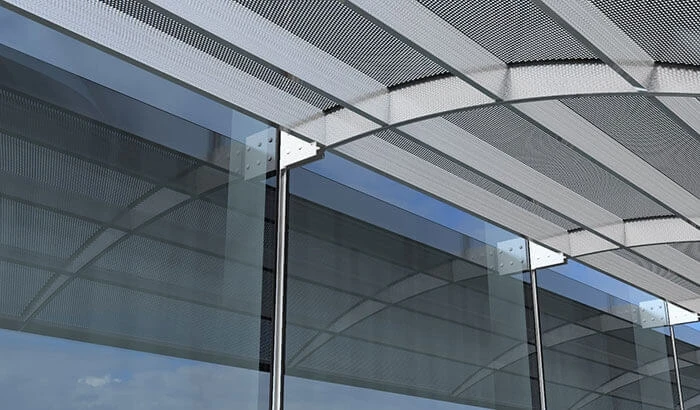& Construction

Integrated BIM tools, including Revit, AutoCAD, and Civil 3D
& Manufacturing

Professional CAD/CAM tools built on Inventor and AutoCAD
It’s no longer enough to build walls with recycled wood pulp or roof buildings with energy-absorbing tiles and call your work “green.” Companies want energy efficiency from top to bottom, roof to slab, folding environmental considerations into the entire process. Designers and architects are being called to lead the way—and using energy-analysis tools helps you get there.
To reap the potential rewards, firms have to know where to start. Energy-modeling tools determine how much energy a building requires per year, based on its size, orientation, and materials. Dan Stine, AIA, CSI, CDT, and BIM administrator with LHB in Duluth, Minnesota, encourages firms of all sizes to develop training for energy-analysis skills.
Adopting and properly using the latest tools has a measurable learning curve—even for associates fresh out of school—to produce the high-quality modeling needed to project a building’s energy consumption. But the democratization of energy modeling is happening, Stine says, thanks to tools such as Autodesk Insight, which offers cloud-computing and simulation services to Autodesk Revit users at no additional cost.
“Energy modeling used to be primarily a specialist field,” Stine says. “Often, it would even be an external company, and it could take potentially weeks and cost thousands of dollars. Now, with this focus on sustainable design, it’s actually being required by clients and municipalities. We can disseminate sustainable-design tools, and energy modeling in particular, to each individual designer on every project, which is really cool.”
Read on to discover four reasons why you should adapt energy-analysis tools and keep your firm ahead of rapidly evolving energy demands.
Justin Dowhower, AIA, LEED AP, WELL AP
Decades ago, it was difficult to really understand the impact that buildings have on the environment, says Justin Dowhower, AIA, LEED AP, WELL AP, and an associate with Corgan in Dallas. But today, clients and owners want to better understand everything that goes into a building and what it will cost in the long run. That requires more research up-front with everything from environmental impacts to energy consumption and generation.
“As designers, it’s easy to simply copy-and-paste what we’ve done on a previous project because it saves time and we know it worked before,” Dowhower says. “But now more than ever, we’re realizing that every design decision we make requires thorough research. We need to push the building industry—manufacturers in particular—to help with disclosing the environmental and health impacts of materials and products that we put in our buildings.”
Stine uses carpet sourcing as an example. When considering lifecycle analysis (LCA), where the carpet comes from greatly impacts the building’s initial energy costs—from the extraction of raw materials to production to transport from the manufacturer to the construction site.
“In Mississippi, they might make a lot of carpet,” Stine says. “To ship that to northern Minnesota has an embodied cost of putting that carpet on a truck and bringing it here. LCA tools can track all of this information associated to all the different elements in a model and know where to look for better options. Our goal is to reduce the global-warming potential as much as possible, which is better for the environment.”
A corporate headquarters design. Courtesy LHB.
The optimization dashboard for the headquarters in Autodesk Insight. Courtesy LHB.
“The ideal result of sharing energy-analysis results early on between the designer and the client is that meaningful changes are still able to be made that will not affect the project schedule or require previous work effort to be undone,” Stine says.
Energy modeling creates outputs that enable side-by-side comparison of materials, a visual benefit that helps improve client communications. This, Stine says, has helped firms make more informed design decisions and helped clients better understand their cost and energy implications.
“Energy modeling is no longer just steady-state energy modeling,” Stine says. “Insight has taken a wide range of inputs for glass and for the roof and possible positions and analyzes all of those possibilities. There are literally thousands of options. Once you get into the cloud, you play with these settings, and the end result also changes—in real time—the energy use index. If you wanted to try more glass on the north side of the building or more roof insulation, you can see it change in real time instead of having to run a variety of calculations and inputting them back into your model.”
Energy modeling—or performance analysis, as Dowhower calls it—isn’t just looking at which way the windows face, where the carpet comes from, or how the paint is made. It also analyzes how the building will be used and how it can save companies money.
“Every three years, a new energy code comes out, increasing the minimum energy-performance standards,” Dowhower says. “We’re seeing that LEED is pretty commonplace now, and that’s above and beyond the code minimum requirements. If the client is also going to be a tenant, such as a corporate office project, they care about their long-term energy and utility costs, so they want to see energy savings over time.”
Performance analysis can also be explored using occupant evaluations. Stine’s firm did this kind of study with its own Minneapolis workspace before creating a renovated, LEED CI Platinum–certified space in a historic building. The design team collected valuable information from the occupants—their coworkers—to learn how the space worked for them and applied this research to their new workspace. After the project was complete, LHB did a post-occupancy evaluation (POE) to see how well the design goals and intentions matched up with the reality. The team not only shared the results of the POE with the entire company to assist in future projects but also presented the findings at conferences such as Greenbuild to help move the industry forward.
Price is always a sticking point, but one of the benefits of energy analysis is demonstrating the value of your choices. For example, Dowhower says, recent work on a mostly glass building provided the opportunity to create almost a dozen sun-control options for his project. From that, he was able to find the optimized solution and present it to the client.
“When we start to go through design development and we’re doing pricing, we can go back and say: ‘Yes, these are actually required. It’s not just a pretty thing we threw on the building,’” Dowhower says. “If you want to value-engineer it or take it out, we can show you the data of all the impacts it’s going to have on building performance.”
Dowhower says companies and firms of all sizes can benefit from bringing energy analysis into their everyday processes. “Firms that have figured out how to integrate performance analysis into their existing workflows have the most success,” Dowhower says. “Services that firms try to add as something ‘extra’ or ‘enhanced’ are usually rejected by clients who don’t want to pay for something that should already be included. Successful firms are making it part of the design process. They’re not calling it anything different. It’s just a best practice and good design.”
Kimberly Holland is a lifestyle writer and editor based in Birmingham, AL. When not organizing her books by color, Holland enjoys toying with new kitchen gadgets and feeding her friends all her cooking experiments.
AECO
AECO
AECO








